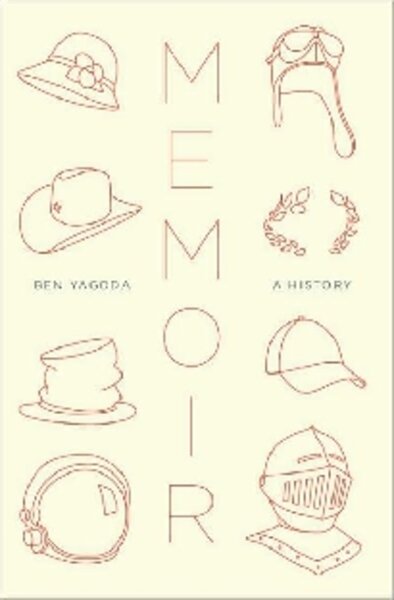Memoir: A History
Loading...
At this point, we probably know more about what a memoir is not – it’s not a multicultural tear-jerker about a dying son (“The Blood Runs Like a River Through My Dreams,” by Nasdijj), an Oprah-approved tale of rehab and regret (“A Million Little Pieces,” by James Frey), or an apple-chucking holocaust romance (“Angel at the Fence,” by Herman Rosenblat) – than what a memoir is. So it seems like the perfect time for Ben Yagoda’s new book, the interesting but uneven Memoir: A History.
In a short “Author’s Note,” Yagoda defines memoir as “a book understood by its author, its publisher, and its readers to be a factual account of the author’s life.” Over the next 11 chapters, he surveys not only memoir’s failures – it has averaged “a scandal a year” since 1960 – but also its many successes.
But first, Yagoda details our own memoir-crazed moment. Between 2004 and 2008, the genre’s sales have jumped 400 percent; we now find father-son sets writing dueling memoirs and releasing them within a week of each other. Anecdotes like this offer a sort of rubbernecking appeal – if this isn’t bubble behavior, I don’t know what is – but Yagoda wants to prove that even they have a history: “Every single one of the books, and every piece of the debate about them, had a historical precedent.”
With his strategy set, Yagoda goes back to the beginning. He moves at a Greatest Hits clip, bouncing from Abelard to Margery of Kempe. It all feels a little dry, and Yagoda seems to sense this, often straining for an anachronistic joke. About Pope Pius II, who immediately follows Dame Margery, Yagoda observes “his tendency – common to so many politicians and chief executives – to make himself the hero of every story”; in the very next paragraph, on the pope’s candor, Yagoda quips that “no American president has dished such dirt.” Such asides become only more irksome when Yagoda falls into a pattern – a paragraph or two per luminary, with a short historical argument or idea every 10th page.
Thankfully, these criticisms apply only to the first 100 pages. After that, everything – even the hokey tone – improves, as Yagoda switches from mere summaries to context and analysis. He traces, for example, how Mark Twain, Ulysses Grant, and P.T. Barnum are “emblematic of a sea change in the kinds of Americans who were inspired to write their autobiographies.” The numbers back him up: Memoirs by “Entertainers” increased from 1 percent of the genre’s output in the 1900s to 14 percent in the ’60s – the same decade, incidentally, when “Entertainers” overtook “Clergy/Religious” as memoir’s most popular subcategory.
It’s easy to connect this to the bookshelves of today, when Michael Phelps’s book can be “written, typeset, bound, and on the shelves within four months after he was handed his final Olympic gold medal.” But Yagoda shows that memoir’s rise was not a straight celebrity march. The 1930s were dominated by the “ordinary American” memoir, and Yagoda pays special attention to Clarence Day’s two smash hits, “Life With Father” and “Life With Mother.”
Day’s books also suggest that, in the history of memoir, changes can be more interesting than continuities. If Day wrote today, as Yagoda points out, he would center his story around the crippling arthritis that forced him to rely on an elaborate pulley system in order to write. Yet Day doesn’t mention it a single time. An even more pointed example of the then/now divide is Susanna Kaysen’s “Girl, Interrupted,” which opens with a facsimile of her case file from McLean Hospital – the same institution that, 30 years earlier, Sylvia Plath felt compelled to novelize in “The Bell Jar.”
Of course, a juicy correspondence is hard to pass up. In 1816, a writer at the North American Review did some digging and found that a popular memoir, “The Narrative of Robert Adams, An American Sailor,” was full of errors. This clearly anticipates the journalists who unearth falsehoods in some of today’s biggest memoirs, a subject to which Yagoda returns in his last (and best) chapter. Here, he revises his own “factual account” definition:
“[I]naccuracy is a problem to the extent a memoir depicts identifiable people, depicts those people in a negative light, (demonstrably) gets gists as well as details wrong, is poorly written, is self-serving, or otherwise wears its agenda on its sleeve. The more of these things it does and the more egregiously it does them, the bigger the problem is.”
This idea-driven cultural criticism leads to all kinds of interesting places. (Who knew Australia was “particularly susceptible” to autobiographical fraud?) It also elevates the relevant history into something more than just memoir’s family tree.
Near the end of his book, Yagoda writes that “the memoir boom, for all its sins, has been a net plus for the cause of writing,” producing a lot of “good” books, if only a few “great” ones. The boom’s first history belongs in the former category. It might have been more if it had sustained the last chapter’s probing tone – perhaps by deepening its research and tightening its scope, as Yagoda did in his excellent “About Town: The New Yorker and the World It Made.” Instead, his new book will appeal to history fans curious about memoir more than to memoir fans curious about history.
Still, it offers many more facts and curiosities like the ones cited here, and, in that sense, “Memoir: A History” accomplishes what it set out to do.
Craig Fehrman is working on a PhD in English at Yale University in New Haven, Conn.






